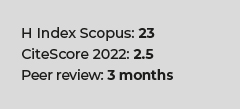Family planning as a basic tool for development
DOI:
https://doi.org/10.17843/rpmesp.2013.303.285Keywords:
Family Planning, Sexual and reproductive health, Pregnancy in adolescenceAbstract
The family planning (FP) concept has traditionally been, and is closely related to, sexual and reproductive health. At the International Conference on Population and Development held in Cairo in 1994, FP is recognized as a health strategy that, properly applied, can contribute to the development of nations. Over the past years we have found that the benefits are not only aimed at preventing unwanted pregnancies, there by preventing induced abortions and maternal death, but it also improves child health, facilitating access to education for children in the world, it promotes the empowerment of women not only in the workplace but also in other areas such as politics and thus, the concept of gender; it helps to reduce poverty by stimulating economic development and increasing the standard of living of people . This means that it not only contributes to one but to the eight Millennium Development Goals by 2015. Despite the evidence of its benefits, there are still social, cultural, political or religious barriers that cause an unmet need in Family Planning, which does not respect the right of individuals to choose and decide the number of children they want, and prevent the experience of a healthy sexuality.Downloads
Download data is not yet available.
Downloads
Published
2014-03-11
Issue
Section
Symposium
How to Cite
1.
Gutiérrez M. Family planning as a basic tool for development. Rev Peru Med Exp Salud Publica [Internet]. 2014 Mar. 11 [cited 2024 Apr. 16];30(3). Available from: https://rpmesp.ins.gob.pe/index.php/rpmesp/article/view/285



























